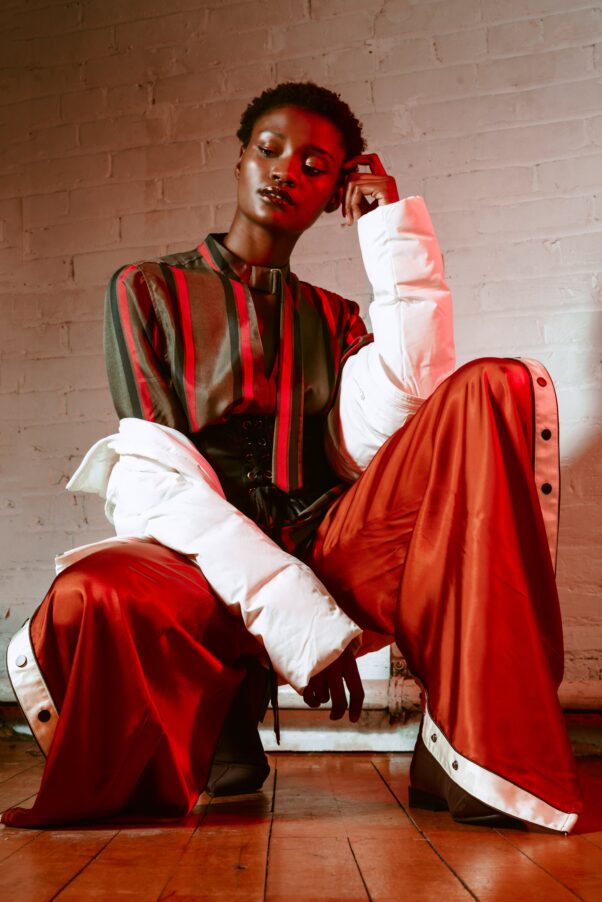We’re all guilty of suffering through hours on end wearing the most uncomfortable, albeit stylish pair of high heels to give off a sense of domination and (although we may not always admit it) to be more attractive to the opposite sex. The appeasing nature of heels has been scientifically proven. A 2015 study by Guéguen found that men were more likely to be willing to participate in a survey when asked by a woman wearing high heels rather than flat-soled shoes. Hence, there is nothing new or unusual in resorting to our wardrobe choices to achieve something – whether it’s increasing your focus, leaving a lasting impression or attracting a potential mate, fashion is a powerful tool.
But with the rise of athleisure, and top models embracing the off-duty sporty look that emphasizes comfort over elegance (or a strangely alluring combination of both), so-called “street style” has become a reflection of a mindset that is changing the face of consumerism.

Every romantic movie in recent Hollywood history has the cliché scene of a sad girl binge eating on Ben & Jerry’s in her old college sweatshirt – but as feeble as this concept may seem, it actually has roots in our natural behavior. According to a study conducted by Professor Karen Pine, almost 60% of women said they’d wear a baggy top when depressed, and only 2% would do the same when feeling happy.
Simply put, our clothing decisions are driven by our mood, and we share a specific group of “happy clothes” that we only wear when we’re not feeling low, and that includes our figure-enhancing and well-tailored pieces. So, what’s this growing hype over grey hoodies and oversized knitted sweaters?
It seems that although the movie scene is a universal one, the fashion tides do have a profound impact on the perception of any given garment. And so, with the rise of the Hadid sisters, Kendal Jenner, Rihanna and Beyoncé, all of whom have a unique influence on fashion and beauty trends creation, we have come to perceive the baggy and the saggy as the new go-to, rebellious outfit that can even pair well with luxe high heels and be considered haute couture. Case in point, Gigi paired a Nickelodeon cropped top with high-end Stuart Weitzman boots only to have it voted one of her best looks of the year.
With the news, Instagram feeds and other social media outlets flooded by such images and titles that celebrate the rise of casual and comfortable, it’s no wonder that we are transitioning towards a more comfort-oriented fashion mindset, which profoundly affects our shopping decisions.
Add to that the convenience of shopping online, and you suddenly find yourself isolated from the once dominant in-store factors that would steer our purchasing decisions, such as the style-specific fragrances or upbeat music that keeps you in a good mood. That makes it easier for the modern consumer to focus on the visual appeal of their chosen items, check online reviews of (dis)satisfied customers and make an informed decision without ever leaving the chair. Talk about multi-layered, omnipresent shopping comfort!
And, naturally, both existing and novel brands follow suit. These new tendencies in fashion perception and greater emphasis on comfort encourage consumers to make more comfortable choices such as the all-time favorite Birkenstock shoes that are the perfect example of “comfort food” of fashion, or wearing your old college hoodie, not because you’re depressed, but because it’s, in fact, fashionable.

Since comfort is ‘in’, it makes perfect sense that what used to be the only acceptable representation of “fitting” clothes is also gaining a new shape, or the lack thereof. While we might still choose the form-fitted sweater for an office event (although that’s questionable at this point), the idea of flattering and desirable is now often equated with chunky footwear, loose and large shirts, tees, ripped jeans and all things several sizes over your own.
Perhaps with the idea of comfort creeping more and more into the fashion universe, we are, actually, finally leaving our comfort zone of norms, and stepping into the realm of new forms of self-expression: ones that do not insist on accentuated curves.



Thanks for a wonderful researchs
Send more topics for reading